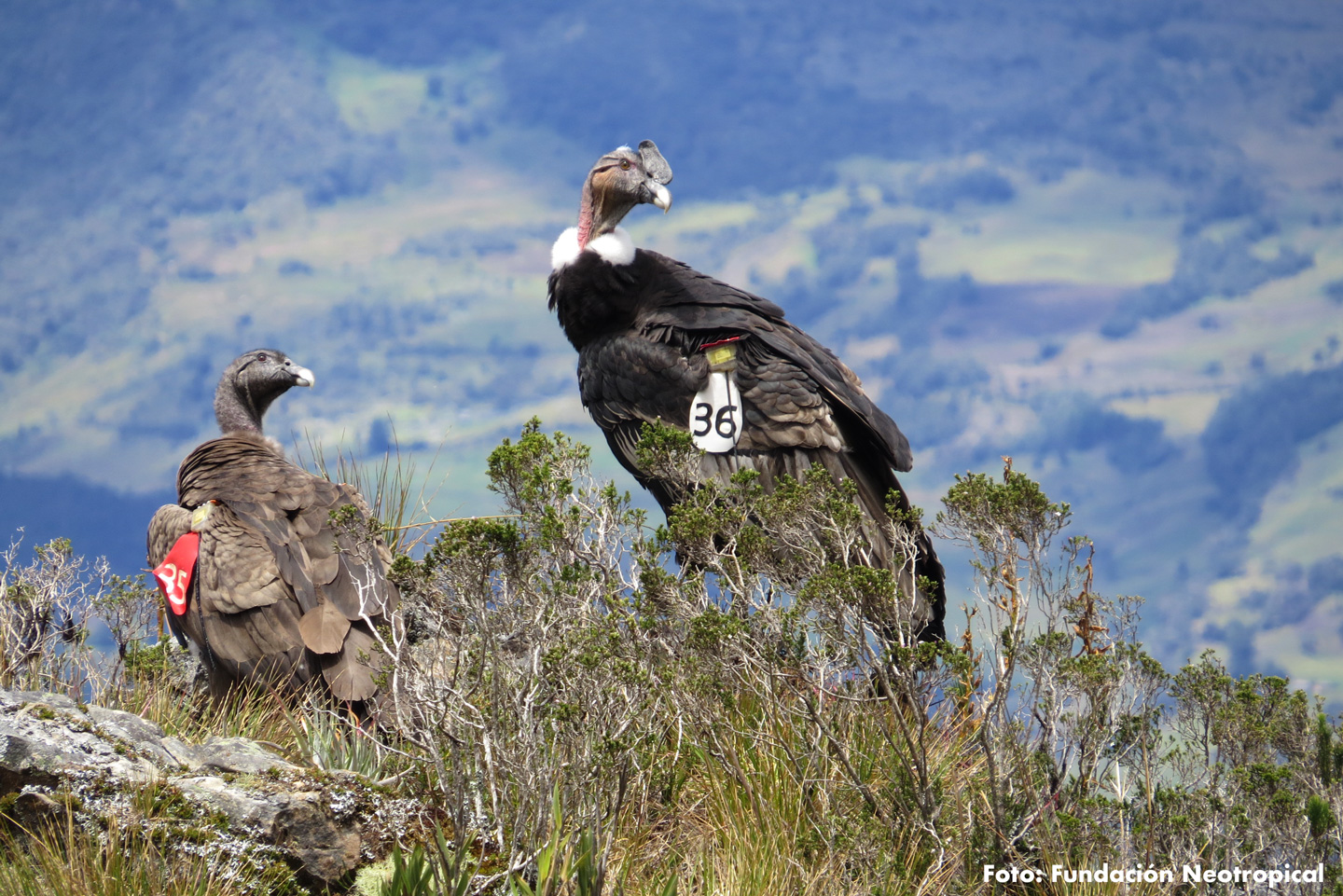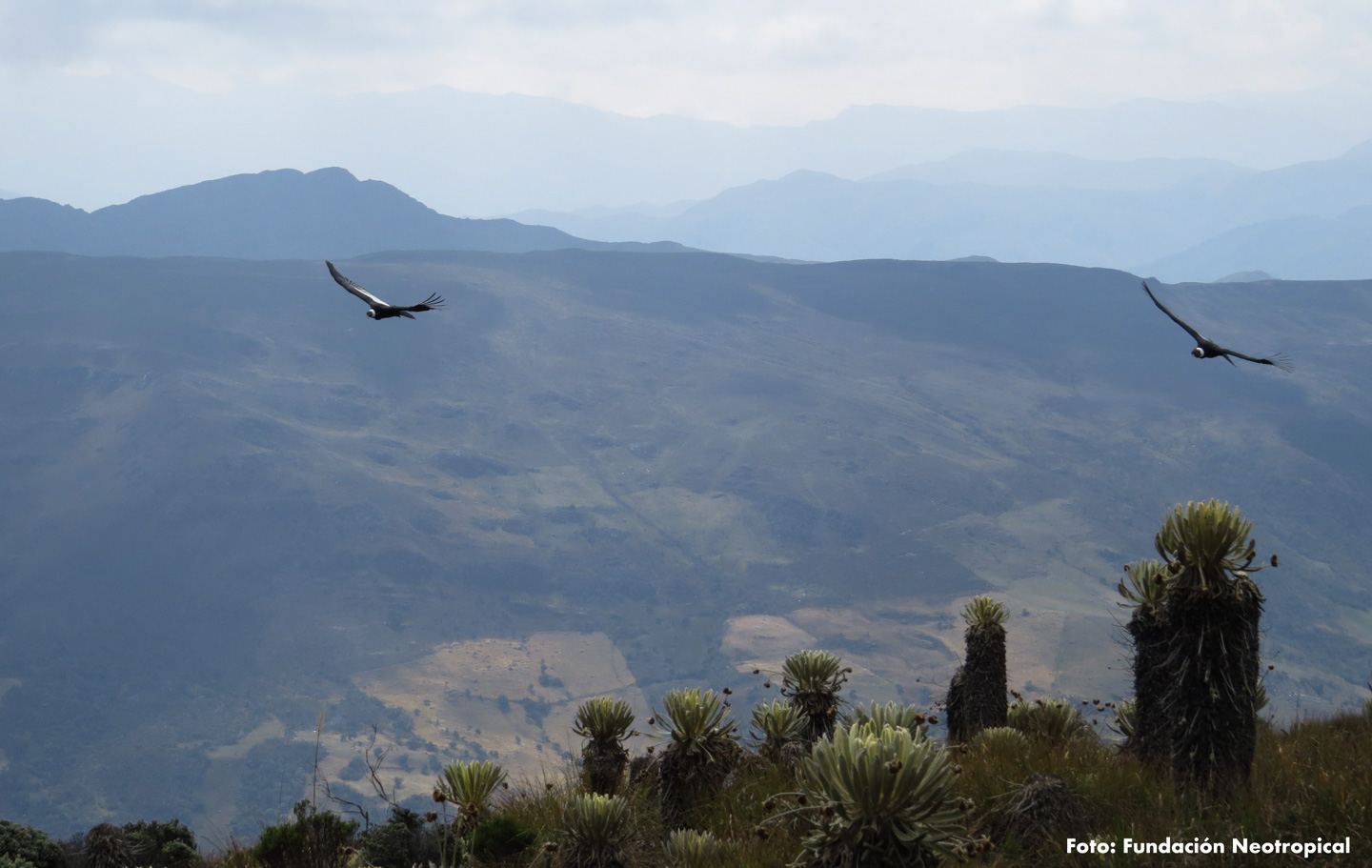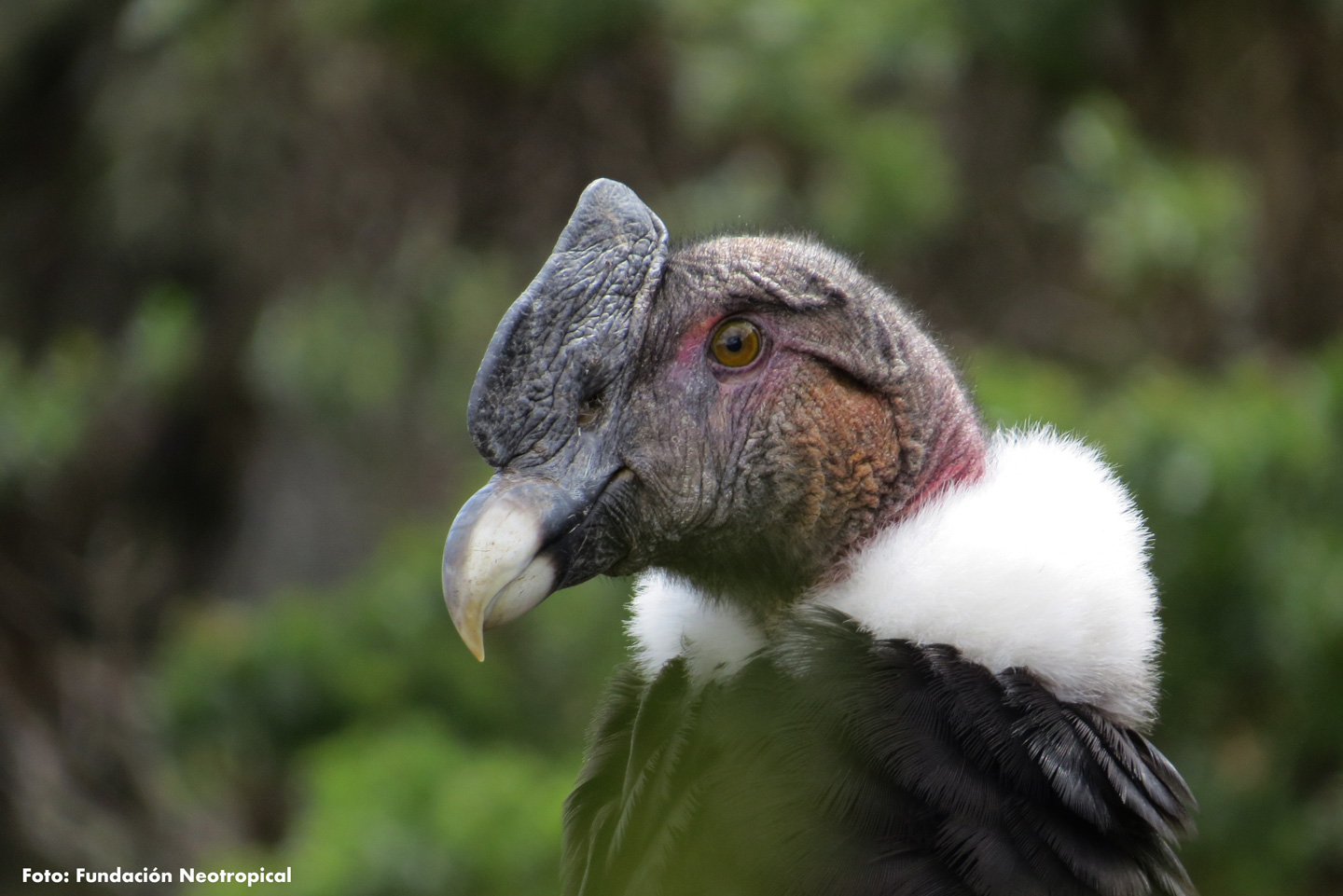The objective is to identify the greatest possible number of specimens through observers distributed in different regions of the country and to calculate an approximate number of surviving individuals in the territory. This information will be crucial in the determination of conservation actions for this symbolic species in critical danger of extinction.

The Andean condor is inherent to Colombia. It is not only a symbol on its national coat of arms; it is also imbedded in the culture of some of its most important indigenous people, who consider it a superior being. For instance, the Nasa indigenous community say that “he is the grandfather who watches from above and regulates energies. He becomes angry when people do not act well in the territory”, explains the tradition of this ethnic group.
But the species, distributed from Venezuela to Argentina, is decimated in our country and there are no longer many individuals that can appraise the status of Mother Earth. The Andean condor is in critical danger of extinction, despite the efforts made at the end of the 80’s to recover it, among which the liberation of 69 specimens with the support of the Zoological Society of San Diego (United States). Regardless of its significance and representativity, at this moment of the XXI Century the impacts of these efforts are still highly uncertain.
Twenty years ago, some scientists talked of 60 condors left in the entire national territory. Today, more optimistic surveys estimate between 90 and 130 surviving individuals, overflying the snow-capped mountains of Santa Marta and El Cocuy (Boyacá), in some paramos like Almorzadero located between Santander and Norte de Santander and in zones such as La Guajira, Cesar and Cauca. They have also been reported in the Puracé (Cauca and Huila), Tamá (Norte de Santander), Chingaza (Cundinamarca), Galeras (Nariño) and Los Nevados (Tolima, Quindío and Caldas) National Parks, among others.
Bur, are they really there? Can they be seen in other places? How many really exist in our departments?
The Primer Censo Nacional del Cóndor Andino (First National Census of the Andean Condor), which will take place in the country between the 13th. and the 15th. of February, wants to answer these questions. It was organized by the Fundación Neotropical (Neotropical Foundation) with the support of Parques Nacionales Naturales de Colombia (National Natural Parks of Colombia), WWF, WCS and the Fundación Hidrobiológica George Dahl (George Dahl Hydrobiological Foundation). Other organizations, such as the Fundación Cóndor Andino-Ecuador (Andean Condor-Ecuador Foundation), the Corporación Autónoma de Caldas (Regional Environmental Authority of Caldas) (Corpocaldas) and the Fundación Ecológica Los Colibríes de Altaquer (Ecological Foundation The Hummingbirds of Altaquer (FELCA), slowly joined.
“There is an enormous information gap. Something complex happens with the condors: due to their high mobility: the individual seen in Santander can be the same one observed in the Sierra Nevada de Santa Marta. This is why it is necessary to use the simultaneous count method with many people, at the same time, collecting information. This avoids the recount of individuals”, explains Fausto Sáenz, Fundación Neotropical researcher and one of the coordinators of the census.
People of different disciplines, of age, who registered voluntarily and on-line until last December, will be in charge of reporting sightings (at the end of 2020 there were 174 people registered). The idea is for them, with support from the environmental authorities, universities and other organizations, to be able to report the greatest possible number of condors from strategic sites previously chosen based on historical records or satellite analyses and where, supposedly, established populations of Vultur gryphus, its scientific name, could exist.
To assure the success of the observers, they will be organized in groups and trained and guided by several regional coordinators, to give them basic skills - such as differentiating males from females - that will enable them to identify the condors in flight and register the corresponding data on a digital platform.
Vulnerable in spite of flying high
It will be an invigorating task for all of them, as they most surely admire nature, because seeing a condor is an extraordinary experience, among other things, due to its magnificence. It is one of the biggest birds in the world, typical of the paramos and the forests; it can reach a three meter wingspan and cover 300 kilometers in one day, only flapping its wings 1 percent of the time.

Condors dominate the skies and although they are always distant, they are vulnerable, because their reproductive rates are extremely low. Females lay one egg every two or three years, reach their reproductive age after 8 and their chicks remain at their parents’ side more than 12 months. And they are monogamous, that is, they have only one couple for their entire life.
But in addition to this strictly natural behavior, that is not as prolific or fertile as would be wished, human pressures are a major concern: infrastructure such as power lines with which they frequently collide, decrease of safe places to eat and nest (they prefer cliffs) and the poisoning of carrion, their preferred food.
However, ironically, with their ingestion of this meat in decomposition, they reduce the probability of transmission of diseases generated by pathogenic agents that develop in what for humans is only waste and where opportunistic species or disease vectors (rodents or insects) accumulate.
“Many farmers poison the meat of sheep or cows killed by a bear, a feline or a dog, and throw it out in the field as a strategy to chase away the predator. But, indirectly, condors ingest that meat. Ten or 15 individuals can arrive to eat and they will die” says Saénz, who explains that, in addition to this indirect conflict, a direct human-condor clash also exists. There are cases in which a condor attacks a newly born calf or sheep and its owners hunt it in retaliation.
Improve re-population
Saénz, who has studied the species, the focus of his PhD studies, for more than ten years, adds that it is decisive “for the census to determine where the most important wild populations are, in order to make a better re-population, a process that additionally takes into account the ratio adult males to adult females.”

This is vital because, among condors, the male dominates the female and the female has a higher mortality rate due precisely to that dominance which means, among other things, less access to food. “Therefore, if a process of re-introduction releases many males in determined zones, the females are going to suffer more. In this connection, the census will let us know what to do to avoid an unbalance between individuals”, adds the expert.
Due to all the above and in order to safeguard its existence, it is necessary to know exactly where this iconic bird lives, where its most important populations are and, with the support of the community, to direct the main actions towards those coordinates to protect it.